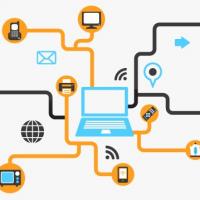Testing in the Internet of Things

These days, we are surrounded by the Internet. It is not just our laptops and mobile devices that are connected to the World Wide Web, but also everyday objects like our TVs, washing machines, cars, and watches. Essentially, our lives are more interconnected than ever before, thanks to the Internet of Things.
The IoT wirelessly connects a range of embedded devices with the Internet infrastructure. And by 2020, this connected world is predicted to expand to 20.8 billion connected devices! This is certainly going to lead to a huge data influx.
Whenever things are connected to the Internet, it is to achieve greater comfort for the user. (This is not always the case so far, but theoretically, that’s the goal.) Embedded software and mobile systems have made their way into our lives and become an integral part of our routines. For a smooth link, it is important that these devices function flawlessly. With such a huge amount of data being exchanged, there is a great need today for testers who understand how to test in the IoT.
Testing devices that are part of the Internet of Things is a little different from testing other machines or programs. As IoT becomes mainstream, you’ll have more application domains than ever before. The basics have to be in the right place—for instance, the performance of the software, the linking of various physical devices, the collection of data, and security all have to be tested to perform under different variables. Testers will need to think beyond the standard device and sensor testing; they’ll have to devise ways to deal with the additional complexities that come with big data, such as great volume and velocity.
What sets the Internet of Things apart from other systems is the way users are an integral part of how it works. Consequently, it is important to test the element of human interaction. Classic integration testing will not suffice. “Test by customer” should become a key step in your testing plan, and you must be ready to provide quick fixes.
The human element encompasses physical aspects, such as the size of the device; the sensory experience, i.e., the reaction to color, touch, and sound; and data and details about the user. It also includes the way environmental variables, like geographical locations and weather conditions, affect the system.
There is another nonquantifiable element to this aspect of testing: the value system. Users from different locations have different cultural values, which means their perceptions and mindsets also may be different. One system cannot work satisfactorily for users across the globe. Testers need to put in extra effort to understand the user base.
IoT and its testing are still in the nascent stage. The network and the processes for testing it will see a lot more development and refinement as technology evolves.

